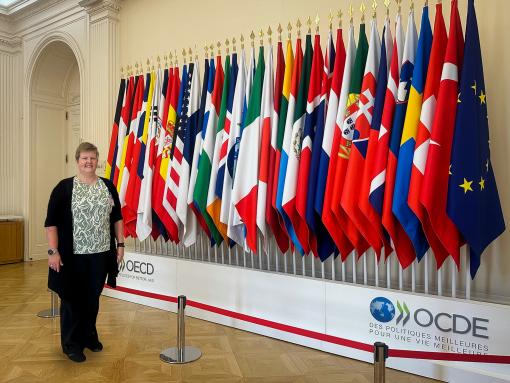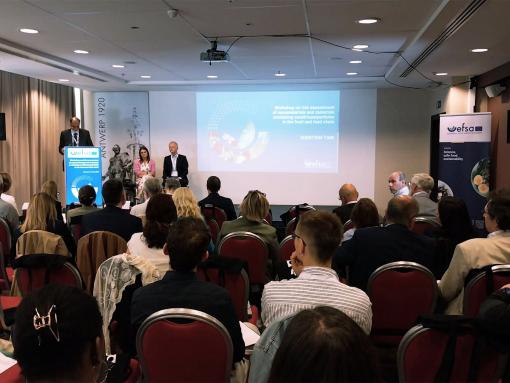REACH Regulation for Nanomaterials: In Review
The German Federal Institute for Occupational Safety and Health (BAuA) has highlighted significant challenges in enforcing the REACH regulation for nanomaterials. Despite the introduction of nano-specific information requirements five years ago (1st January 2020), only a limited number of substances (around 176) currently have submitted data so far – a lot less than anticipated. One of the primary obstacles is the absence of OECD-approved test methods for meeting nano-specific REACH data requirements, which not only hampers both the collection of necessary data by the registrants but also the regulatory assessment. Namely, there is no consistent framework to aim toward, nor assess against. Furthermore, the quality and completeness of the data submitted by registrants are often inadequate, making it difficult for authorities to evaluate nanomaterials effectively.
Regulatory Differences Between Nanoforms & Non-Nano Forms
Under REACH and CLP, conventional substances can be defined by e.g. the 80/20 rule, where a constituent must be at least 80% (w/w) and impurities not more than 20% (w/w) to be a mono-constituent substance. Such rules result in successfully managing chemical similarity. However, such rules cannot be exclusively applied to nanoforms, for which their chemical identity is also characterised by other parameters such as size, shape or surface area/coating. Since, differences in these characterisers can greatly impact their hazards, determining if two nanoforms are the same is challenging without a mechanism to decipher the allowable differences in these characteristics. Currently, ECHA uses manufacturing processes to compare nanoforms, but no clear thresholds exist. This lack of criteria leads to inconsistent reporting and assessment. Establishing thresholds would help define when nanoforms are sufficiently different, improving regulatory clarity and safety management.
New Legal Provisions for Nanoform Producers
The evaluation process itself is delayed due to the sequential nature of dossier and substance assessments, with missing data. Further, there is unclear guidance on grouping sets of similar nanoforms which adds to the complexity. Legal gaps also hinder enforcement, notably the absence of clear requirements for downstream users, who are not fully covered under the current nano annexes. To address this, Germany has proposed introducing new legal provisions, to require producers of nanoforms to submit relevant quantity, characterisation and safety data.
Nanomaterial-Specific Testing Techniques
Analytical methods used for enforcement purposes are also insufficient, necessitating the development of validated, nanomaterial-specific testing techniques. A unified EU-wide strategy for creating and implementing these test methods is urgently needed, along with continued funding for the Malta Initiative, which aims to make EU regulations more enforceable for nanomaterials. The Malta Initiative published a list to prioritise the development of OECD Test Guidelines (TGs) and Guidance Documents (GDs) applicable for Nanomaterials and Advanced materials to make legislation implementable, to support industry with their regulatory compliance and to guide decision makers towards funding focus for the most urgently needed OECD TGs and GDs.
Nanomaterials Remain Largely Unenforceable Under REACH
Overall, the BAuA report underscores that, due to the significant gaps in test methods, data quality, and legal clarity, the regulation of nanomaterials under REACH remains largely unenforceable at present. It is felt that ECHA is fully aligned with BAuA on the above-mentioned topics and is funding research projects to develop a regulatory sound framework for sameness of nanoforms or the development of a tiered regulatory strategy for the set building of nanoforms drawing amongst others on (high-through-put) new approach methodologies.
Delays for Complete & Compliant Dossiers for Nanoforms
Blue Frog Scientific has worked with nanomaterials under regulatory frameworks, prior to and since the inception of the nanomaterial specific requirements of REACH in 2020. Based on the experience gained working with hundreds of nanoforms, Blue Frog fully aligns with the opinion of BAuA. For example, our work has several times highlighted, that one must execute dissolution and dispersion stability studies prior to actioning any other studies toward data compliance as this dictates the rest of the testing strategy. These can take 3-6 months to schedule and execute. Depending on these results, it can immediately move Annex VII and Annex VIII dossiers to long-term studies which require testing proposals to be confirmed adding further 6 months to the timeline. The mechanism, while correct, leads to more delays in achieving a complete and compliant dossier. Furthermore, while dissolution is underpinning the whole testing programme it still has no standardised and validated test guideline.
These challenges result in a lengthy and iterative process where Blue Frog has been discussing with authorities and interested parties to establish current state of the art of the science and what can and what cannot be waived on technical grounds to ensure longevity of the dossier. Even once a method is considered acceptable, finding experienced contract research organisations to run these tests then can become difficult. While some guidance may be available, it is not always easy to interpret.
Nanoform Consortium to Develop Regulatory Framework
Blue Frog Scientific is leading a consortium of scientists, consultants and industry representatives currently working on the ECHA contract ‘Nanomaterial Risk Assessment: a regulatory way forward for sameness and grouping approaches’ to develop a regulatory framework for assessing the acceptable variability of nanoforms. This aims at defining the acceptable variation in nano-characterisers which does not lead to a difference in nanoform properties. The goal is to achieve an “80:20” rule for the nano-characterisers. The contract highlights the commitment and understanding of the authorities that things must be simplified for a more accessible market and understandable regulation, that does not inadvertently penalise nanoforms, for simply being nanoforms, making efforts disproportionately more intense than for standard substances.
Nanoform Compliance is Not Impossible
While difficult, regulatory compliance is not impossible. Regardless of the gaps, it is clear, that the community is aware and working towards the betterment of the frameworks. Simply, the regulatory specific science is not advanced enough to fully address all the issues. Now is the time to keep highlighting this to ensure regulatory science for nanoforms is not forgotten and remains at the forefront of thinking from the European Commission down, before we hinder this Key Enabling Technology and innovation from Europe.
Blue Frog Scientific have a dedicated team for nanomaterial regulatory solutions. Our experts have a wealth of experience in nanomaterial regulatory submission and academic research, and are here to support you in developing tailored strategies for your nanomaterial registration. Call or email to speak directly with one of our nanomaterial regulatory consultants.




